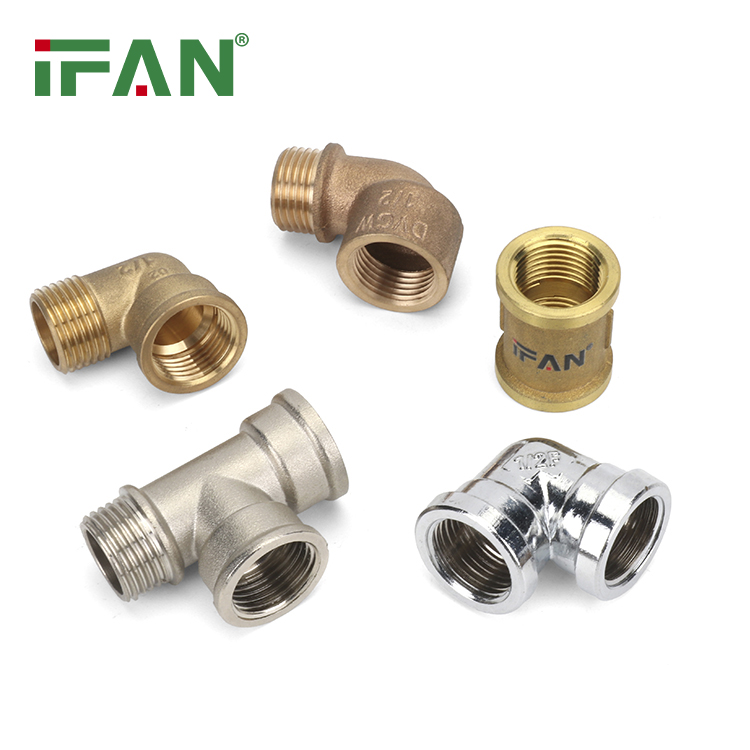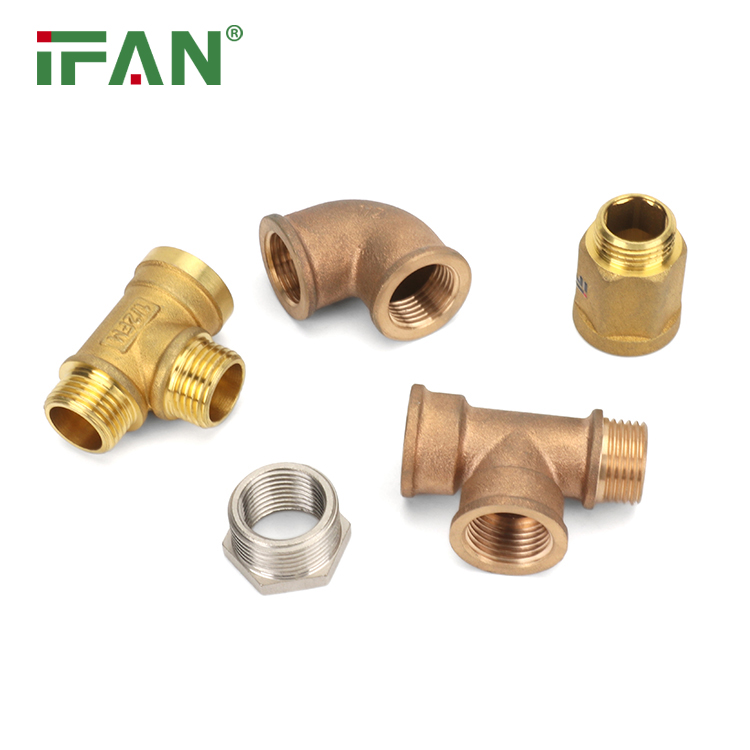IFAN factory 30+ years manufacture experience support color /size customization support free sample.Welcome to consult for catalog and free samples.This is our Facebook Website:www.facebook.com,Click to watch IFAN’s product video.Compared with Tomex products, our IFAN products from quality to price are your best choice, welcome to buy!
Introduction to Brass and Stainless Steel Fitting
Brass and stainless steel fittings are both popular choices in various industries for their unique properties and applications. Understanding their differences and specific advantages helps in selecting the right material for different operational needs.
Material Composition and Properties
Brass fittings are primarily composed of copper and zinc, offering good corrosion resistance, ease of machining, and excellent thermal conductivity. They are ideal for applications where aesthetic appeal and affordability are important factors. On the other hand, stainless steel fittings are made primarily of iron with varying amounts of chromium and nickel, providing superior corrosion resistance, strength, and durability. Stainless steel fittings are suitable for harsh environments and applications requiring high mechanical strength.

Performance and Durability
Brass fittings exhibit good resistance to dezincification (a form of corrosion affecting brass alloys) in most environments, making them suitable for water distribution and plumbing systems. However, exposure to certain chemicals or marine environments may require special brass alloys or protective coatings. Stainless steel fittings offer exceptional corrosion resistance across a wide range of environments, including marine, chemical, and industrial settings. They are also resistant to high temperatures and mechanical stress, ensuring long-term durability and reliability.
Applications and Suitability
Brass fittings are commonly used in plumbing systems, HVAC installations, and general-purpose fluid handling where cost-effectiveness and ease of installation are crucial. They are also favored in decorative applications due to their golden appearance and ease of polishing. Stainless steel fittings are preferred in industries such as food processing, pharmaceuticals, and marine engineering where hygiene, durability, and corrosion resistance are paramount. They are also used extensively in structural applications requiring high strength and reliability.

Cost Considerations and Environmental Impact
Brass fittings are generally more affordable than stainless steel fittings, making them a cost-effective choice for many applications, especially in plumbing and residential construction. They also have a lower carbon footprint compared to stainless steel, as brass is highly recyclable and energy-efficient during production. Stainless steel fittings, while initially more expensive, offer significant long-term cost savings due to their durability and minimal maintenance requirements. They are also recyclable and contribute to sustainable building practices.
Conclusion
In conclusion, choosing between brass and stainless steel fittings depends on specific application requirements such as corrosion resistance, mechanical strength, cost considerations, and environmental impact. Brass fittings are suitable for general-purpose applications where corrosion resistance and aesthetic appeal are important, while stainless steel fittings excel in demanding environments requiring superior durability and hygiene standards. By evaluating these factors and understanding the unique properties of each material, industries and consumers can make informed decisions to ensure optimal performance and longevity in their plumbing, industrial, and structural applications.
This comparison provides a detailed overview of the characteristics, applications, and considerations when selecting between brass and stainless steel fittings, highlighting their distinct advantages and suitability for different industries and environments.





